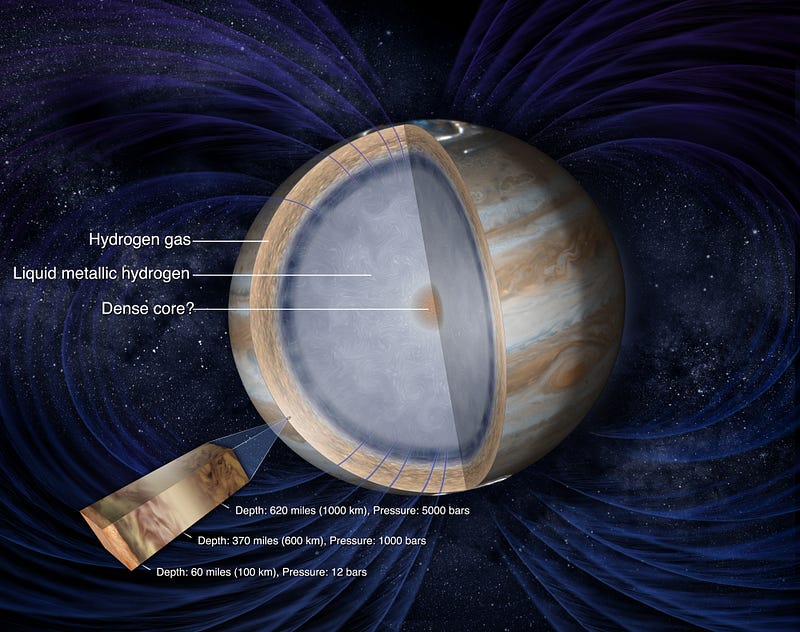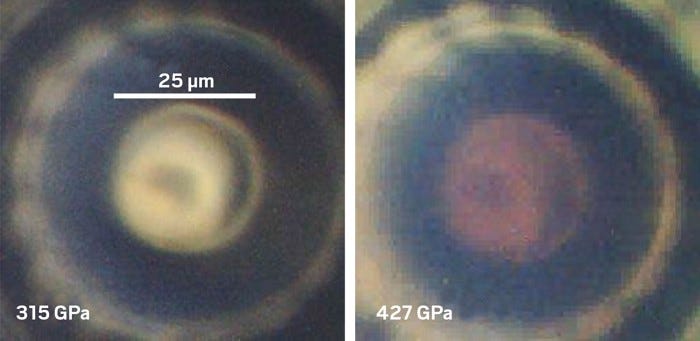A Breakthrough Material That Could Transform Technology
Written on
Chapter 1: The Promise of Metallic Hydrogen
Imagine a material that might serve as the most powerful rocket propellant, offering 20 times the specific energy of Space Shuttle engines. Furthermore, this same material could potentially act as the first room-temperature superconductor, paving the way for computers thousands of times more capable than those we currently use. Such an advancement could finally bring us closer to the long-sought dream of nuclear energy, enhancing the safety and efficiency of our existing power plants and revolutionizing medicine and transportation. Since its initial hypothesis in 1935, scientists have been racing to create this material, and recent developments may have brought us closer to that goal.
The journey begins with hydrogen, the most abundant element in the universe, consisting of a single proton and electron. While hydrogen gas appears simple, its complexity increases in different states. A striking example is the vast ocean of liquid metallic hydrogen located about 8,000 miles below Jupiter's clouds, where extreme pressure disrupts the bond between the proton and electron, creating a unique state of matter.
At high pressures, hydrogen is theorized to behave like a metal, becoming an electrical conductor as its molecules break apart. Unlike metals with a structured lattice of ions and free-moving electrons, metallic hydrogen is expected to lack this lattice due to its single proton. This uniqueness opens up a range of exciting applications.

Section 1.1: The Potential of Meta-Stable Metallic Hydrogen
Research suggests that metallic hydrogen could be meta-stable, remaining in its metallic form even if the pressure is reduced to normal levels. This is akin to how diamonds retain their structure after being formed from carbon under high pressure. However, no metallic hydrogen samples exist on Earth, and claims from scientists at Harvard about creating it have sparked controversy after their samples vanished before further analysis.
Recently, promising findings were published in the journal Nature.

Section 1.2: The Experimental Process
In this recent study, researchers began by applying pressure to a dense hydrogen sample, measuring in gigapascals (GPa). Initially, the sample remained transparent to both visible and infrared light, but as pressure increased to 300 GPa, it lost its transparency. Upon reaching 425 GPa, the sample became reflective, suggesting it had entered its metallic state.

Chapter 2: Future Implications of Metallic Hydrogen
Despite the promising findings, questions remain about whether the hydrogen would maintain its metallic properties at pressures above 425 GPa. Current technology struggles to measure the extreme conditions under which these experiments occur, limiting our understanding of metallic hydrogen's electrical conductivity—a crucial factor in confirming its metallic nature.
If the researchers have indeed succeeded in creating metallic hydrogen, it would mark a historic achievement, being the first instance of such a material on our planet.
The first video titled "Will AI Spark the Next Scientific Revolution?" delves into the potential of artificial intelligence to revolutionize scientific research and technology.
The second video, "Technology Revolution | Minecraft Modded Survival Ep. 4," illustrates how technology can be creatively applied in gaming, highlighting innovation in a fun context.
As a potential rocket fuel, metallic hydrogen would be lightweight and compact, releasing the massive energy required to convert it back to molecular hydrogen. This could lead to a specific impulse estimated at 1,700 seconds—far superior to the current rockets' 450 seconds—allowing for single-stage launches and larger payloads.
Metallic hydrogen could enable deeper space exploration while facilitating advancements on Earth, particularly in energy storage and device design. As research continues, we may be on the brink of a significant technological milestone, underscoring the importance of this potentially groundbreaking material.